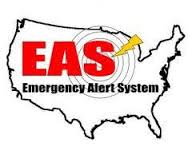The FCC has released a comprehensive report regarding the nationwide Emergency Alert Service (EAS) test conducted on September 28, 2016 by the FCC, National Weather Service (NWS) and Federal Emergency Management Agency (FEMA). The primary purpose of the 2016 Nationwide EAS Test was to assess the reliability and effectiveness of FEMA’s Integrated Public Alert and Warning System (IPAWS) distribution architecture, which delivers content-rich EAS alerts over a secure Internet gateway directly to EAS Participants. The 2016 Nationwide EAS Test was also designed to assess the effectiveness of measures the FCC and its federal partners and other stakeholders took to address problems uncovered by the 2011 Nationwide EAS Test. Among the findings found in the report are the following: (1) over 95% of EAS Participants, including 20,000 broadcasters and cable broadcasters, participated in the 2016 Nationwide EAS Test, which is a 25% improvement over the 2011 test; (2) IPAWS delivered “superior digital sound and successfully delivered non-English alerts to those EAS Participants that wished to distribute them;” (3) almost half of the 2016 Nationwide EAS Test participants received the test over-the-air rather than from IPAWS, and these participants were unable to deliver the CAP-formatted digital audio, Spanish, and text files as a result; (4) some EAS Participants failed to receive or retransmit alerts due to erroneous equipment configuration, equipment readiness and upkeep issues, and confusion regarding EAS rules and technical requirements; and (5) some EAS Participant groups had low participation rales, particularly Low Power television broadcasters. The comprehensive report also contains recommendations on how to improve EAS, including a push to make IP-based IPAWS more pervasive, improve and expand the actual content contained in future warnings, and help EAS Participants boost participation by educating them on Part 11 rules requiring participation and by updating the EAS Operating Handbook.








